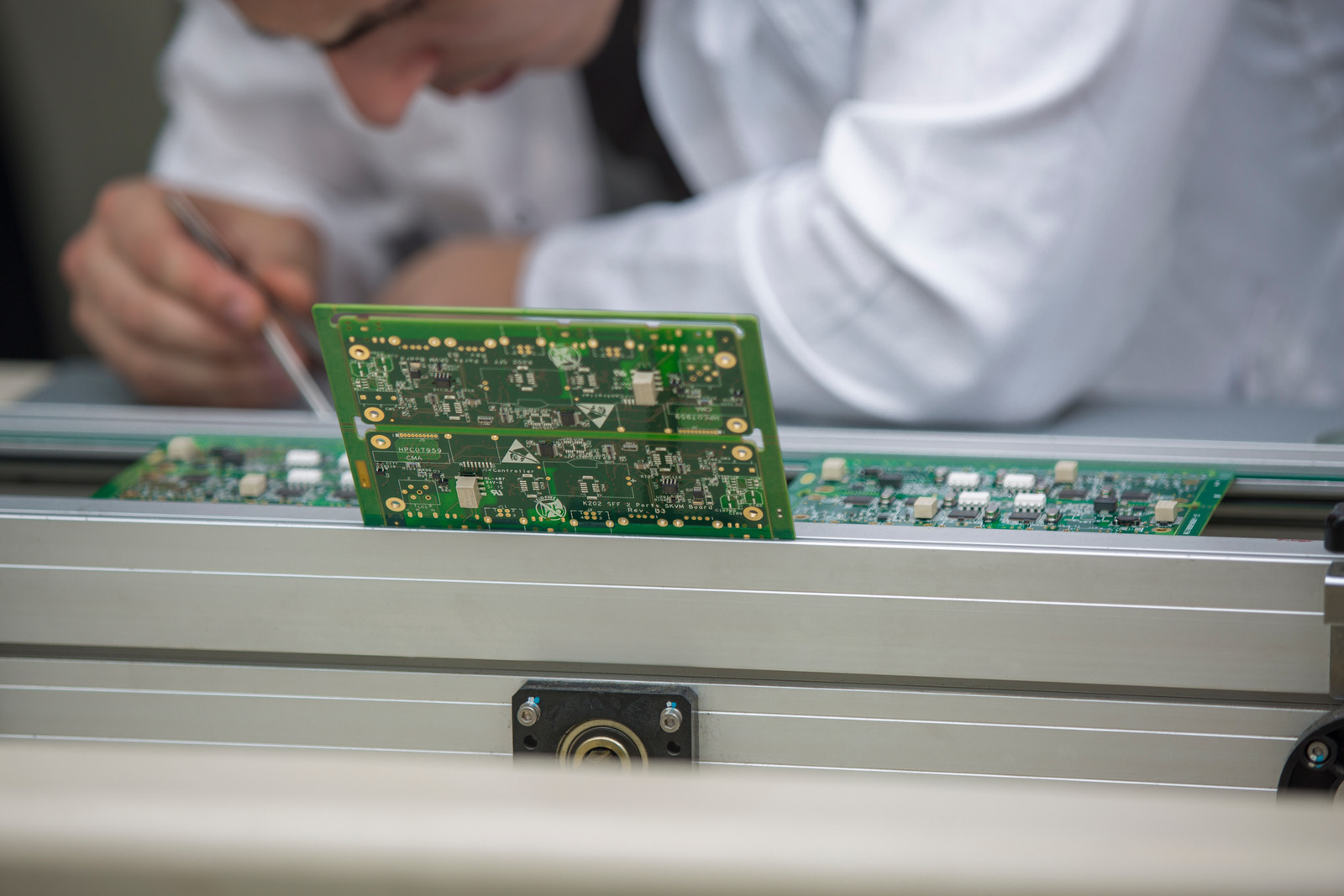
In electronics manufacturing, quality is not a department; it’s a process. Whether producing a monitoring device, an automotive control board, or a consumer gadget, the journey from design to deployment involves multiple checks, validations, and tests to guarantee that the final product works exactly as intended for its entire expected lifespan.
Failure to embed quality assurance (QA) and testing at every stage can result in:
- Costly recalls
- Brand reputation damage
- Compliance penalties
- Safety risks for end-users
That’s why trusted partners like Contract Production Ltd embed quality assurance (QA) and testing into every stage of the manufacturing process, ensuring reliability, compliance, and long-term performance.
This guide takes a deep dive into:
-
- Quality Assurance vs. Quality Control vs. Testing
- Why Quality Assurance Is Critical in Electronics Manufacturing
- The QA Process – From Design to Deployment
- Electronics Testing Methods – From Simple to Advanced
- Industry Standards for QA and Testing
- Best Practices for Effective QA and Testing
- The Cost of Neglecting QA
- Future of QA in Electronics Manufacturing
- Frequently Asked Questions (FAQs)
- Conclusion
1. Quality Assurance vs. Quality Control vs. Testing
Before we go further, let’s clarify some terms that are often confused:
| Term | Definition | Goal |
| Quality Assurance (QA) | A process-oriented approach focusing on preventing defects during the design and manufacturing stages. | Build quality into the process from the start. |
| Quality Control (QC) | A product-oriented approach that inspects and tests the finished product to identify defects. | Detect defects before the product ships. |
| Testing | A subset of QC involves evaluating performance, reliability, and safety under various conditions. | Verify that the product works as intended. |
At Contract Production Ltd, these three elements are integrated into a seamless framework, so products aren’t just tested at the end, but built on quality from day one.
See how we support your PCB Testing & QA needs
2. Why Quality Assurance Is Critical in Electronics Manufacturing
Electronics are complex systems. A single failed solder joint, a microscopic crack in a PCB trace, or an out-of-spec capacitor can cause:
-
- Intermittent faults (the most difficult to diagnose).
- Complete system failure.
- Safety hazards.
By embedding QA throughout, Contract Production Ltd ensures:
-
- Higher customer satisfaction.
- Lower warranty claims.
- Regulatory compliance.
- Longer product life cycles.
- Reduced production rework costs.
3. The QA Process – From Design to Deployment
Design for Quality (DFQ)
Quality starts in the design phase.
Key actions:
-
- Apply Design for Manufacture (DFM) and Design for Testability (DFT) principles.
- Select components with proven reliability records (automotive or aerospace grade for critical applications).
- Use simulation tools to test thermal, electrical, and mechanical performance.
Many contract manufacturers offer design-for-quality consultations, ensuring that engineering decisions align with manufacturing realities from the start.
Supplier Qualification
If components or subassemblies come from external suppliers, they must meet your quality standards.
Supplier QA methods:
-
- Auditing their facilities.
- Reviewing their certifications (ISO 9001, IATF 16949, AS9100, etc.).
- Evaluating their defect history and delivery performance.
Incoming Quality Control (IQC)
Every batch of components should be checked before entering the production line.
Checks include:
-
- Visual inspection.
- Dimensional measurement.
- Electrical property verification.
- Counterfeit component detection.
In-Process Quality Control (IPQC)
Ongoing inspection during manufacturing helps catch defects early.
Methods:
-
- Automated Optical Inspection (AOI) to detect misplaced components, solder bridges, or polarity errors.
- Solder Paste Inspection (SPI) to ensure correct paste volume and placement.
- Process parameter monitoring, e.g., reflow oven temperature profiles.
Final Quality Control (FQC)
This is the last checkpoint before products leave the factory.
Activities:
-
- Functional testing.
- Environmental stress testing.
- Compliance certification checks.
Post-Shipment QA
Even after deployment, QA continues via:
-
- Customer feedback monitoring.
- Field performance data analysis.
- Root cause analysis of returns.
At Contract Production Ltd, quality is not an afterthought; it’s embedded into every stage of our process. From design to deployment, we guarantee precision, compliance, and reliability so that every product leaving our facility is built to perform and built to last.
4. Electronics Testing Methods – From Simple to Advanced
Testing is a core part of QC. Here are the most common methods:
In-Circuit Testing (ICT)
-
- Purpose: Checks each component on the PCB individually.
- Detects: Open circuits, shorts, incorrect components.
- Benefit: High coverage; very effective for high-volume production.
Flying Probe Testing
-
- Purpose: Similar to ICT but without custom test fixtures.
- Best for: Low- to medium-volume production or prototypes.
- Benefit: Flexible and fast setup.
Functional Testing
-
- Purpose: Simulates real-world use.
- Example: Powering a medical monitor and checking signal accuracy.
- Benefit: Verifies performance against actual operating conditions.
Burn-In Testing
-
- Purpose: Operates the device under load for hours/days.
- Detects: Early-life component failures (infant mortality).
- Benefit: Improves field reliability.
Environmental Stress Screening (ESS)
-
- Purpose: Exposes products to temperature cycles, humidity, and vibration.
- Used in: Automotive, aerospace, and military electronics.
- Benefit: Identifies weak points before deployment.
X-Ray Inspection
-
- Purpose: Reveals internal solder joints (e.g., BGA packages) that are invisible to optical inspection.
- Benefit: Detects hidden faults without destroying the board.
By combining these methods, Contract Production guarantees that every product is tested to the highest standard, not just for function, but for long-term reliability in demanding environments. Our testing framework ensures performance, compliance, and durability, giving our clients complete confidence in every unit delivered.
5. Industry Standards for QA and Testing
To ensure credibility and compliance, electronics manufacturers often follow these standards:
-
- ISO 9001 – General quality management.
- IATF 16949 – Automotive sector.
- AS9100 – Aerospace sector.
- ISO 13485 – Medical devices.
- IPC-A-610 – Acceptability of electronic assemblies.
- MIL-STD-810 – Environmental testing for military applications.
6. Best Practices for Effective QA and Testing
-
- Integrate QA Early: It’s cheaper to prevent defects than fix them later.
- Automate Where Possible: Automation reduces human error.
- Document Everything: Traceability is key for audits and recalls.
- Train Staff Continuously: Even the best systems fail without skilled operators.
- Perform Root Cause Analysis: Don’t just fix the symptom, eliminate the source.
7. The Cost of Neglecting QA
Poor QA can lead to:
-
- Safety hazards.
- Warranty claim spikes.
- Lost contracts.
- Legal liability.
In 2018, a major automotive recall cost over $1 billion due to defective electronics, a reminder that cutting corners is far more expensive than investing in quality. By contrast, partnering with Contract Production Ltd ensures quality is never compromised, protecting both your business and end-users.
8. Future of QA in Electronics Manufacturing
-
- AI-Driven Inspection: Machine learning to detect defects faster and more accurately.
- Digital Twins: Virtual replicas to test designs before production.
- Predictive Maintenance: Monitoring machines to prevent production defects.
- More Stringent Standards: As electronics integrate into safety-critical systems.
9. Frequently Asked Questions (FAQs)
Q1: What’s the difference between QA and QC?
Quality Assurance (QA) is process-focused. It establishes and monitors the procedures, standards, and best practices to ensure products are designed and manufactured correctly from the start. Quality Control (QC), on the other hand, is product-focused, involving inspections and tests of individual units to verify they meet specifications. Both are complementary: QA prevents defects, QC detects them.
Q2: How much testing is enough?
The extent of testing depends on the application and industry requirements. Safety-critical sectors like automotive require exhaustive testing at every stage of production. Consumer electronics may rely more on sampling methods and statistical quality control. The key is aligning testing protocols with risk, regulatory requirements, and product complexity.
Q3: Can automation replace human QA inspectors?
No. Automation enhances QA by enabling faster, more consistent testing and reducing human error in repetitive tasks. However, human expertise is essential for interpreting complex results, handling unexpected defects, and making informed decisions on product release.
Q4: Is 100% testing always necessary?
For safety-critical applications, 100% testing is often mandatory to meet regulatory compliance. For less critical consumer products, statistical sampling and batch testing may provide sufficient assurance of quality while optimising time and cost.
Q5: What types of testing are typically performed on electronics?
Common testing methods include:
-
- Functional Testing: Verifies the device performs as intended.
- In-Circuit Testing (ICT): Checks PCB assembly connections and component values.
- Environmental and Stress Testing: Ensures reliability under temperature, vibration, humidity, and shock conditions.
- Burn-In Testing: Detects early-life failures by operating the device under stress for a set period.
- Compliance Testing: Verifies adherence to regulatory and safety standards, e.g., CE, UL, ISO 26262.
Q6: How do manufacturers ensure long-term reliability?
Reliability is ensured through a combination of robust design, rigorous QA processes, environmental and stress testing, and ongoing process control. Lifecycle testing and failure analysis help identify potential weaknesses before mass production.
Q7: What role does traceability play in QA?
Traceability allows manufacturers to track every component, batch, and process step throughout production. This is critical for identifying root causes of failures, managing recalls, and complying with regulatory requirements.
Q8: How often should QA processes be reviewed or updated?
QA processes should be reviewed continuously, with formal audits at least annually or whenever new technologies, materials, or regulatory requirements are introduced.
Conclusion
Quality assurance and testing in electronics manufacturing are non-negotiable foundations for reliability, compliance, and customer trust.
By embedding QA into every stage from design and supplier selection to testing and post-delivery monitoring, manufacturers can reduce defects, increase customer satisfaction, and meet the world’s strictest industry standards.
At Contract Production Ltd, we ensure every product is engineered to perform, built to comply, and designed to last. In today’s fast-moving market, quality is no longer just a competitive edge; it’s a necessity. By choosing Contract Production as your trusted manufacturing partner, you gain the assurance of uncompromising quality, reliability, and long-term value in every build.
Contact us today at 01751 475950 or sales@contractproduction.co.uk to discuss your project and embed QA at every stage of production.








